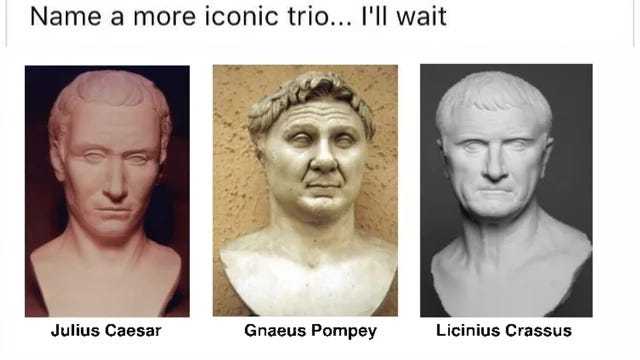Three’s a crowd. It’s also the number of sides in a triangle, and the exact number of people involved in a toxic trio friend dynamic.
In math, three is an uneven, or odd, number. In human relationships, three can be catastrophic. From the First Triumvirate of Rome to The Talented Mr. Ripley and The Plastics in Mean Girls, triangular relationships are plagued with power dynamics, tension, passion, and deep sociological flaws.
Take, for example, the latest season of White Lotus: three friends burdened with subtle shade and conjecture. Anyone who’s ever been involved in a triad recognizes the SOS from a mile away: this is disaster waiting to happen.
But why are triads so much more complex and, ultimately, problematic than dyads?
Not all triads are unstable or unpredictable. In the animal kingdom, triads exist in harmful, innocuous, or beneficial forms. In fact, many examples in nature show a collaborative dynamic. Take chickens, which follow a pecking order or hierarchical triad, and hyenas, which (I just learned) also follow a leader-follower-pack structure. In nature, this structure creates order and stability.
But what’s missing? Ego. And that’s where toxicity is bred.
When ego is involved, a trio of wolves that would otherwise present a clear hierarchy, can turn vicious, jealous, and even murderous. This is what happens in human relationships: any twisted romantic entanglement that involves an “other,” man or woman, results in chaos (Fatal Attraction comes to mind).






